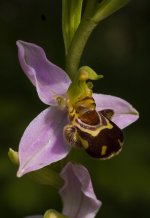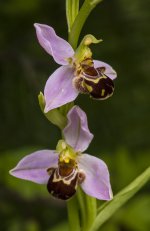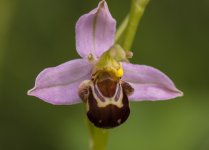Sumday 24th June
Bit of a mixed morning - more breeding set-backs but also some wader movement (presumably up the River Severn driven by south-westerly winds)
MOORS POOL
10 Oystercatcher (9 adults + 1 fledged youngester) but only 2 chicks on Broad Meadow, 2 Cormorant, 4 GC Grebe but only 1 chick noted, 6 Tufted Duck, 80 Canada Geese, 38 BH Gull, 2 Common Tern, 2 LBB Gull, 2 Mute Swans + 3 cygnets, 3 Moorhen, 41 Mallard, 63 Coot, 1 Little Grebe, Cuckoo.
Counted 23 Bee Orchids along the causeway with Phil Mumby
SAILING POOL
1 Coot, 4 GC Grebe (no sign of any chicks), 1 Common Tern, 10 Canada Geese, 31 Mallard
FLASHES
9 Avocet but only 6 chicks seen, Redshank (earlier at the Moors as per Dave J), 11 Lapwing, 4 Oystercatcher (presumably part of the Moors contingent), 4 LRP (right hand nest abandoned), 1 Teal (drake), 18 Tufted Duck, 29 Mallard, 2 Canada Geese, 215 BH Gull, 2 Common Tern, 6 Coot, 3 Moorhen, LBB Gull through, 3+ fledged Goldfinch, fledged Whitethroat along the path. Last night's Curlew roost reached 10.
Water level 0.46
I will look up the stats for Oystercatcher peak counts later.








